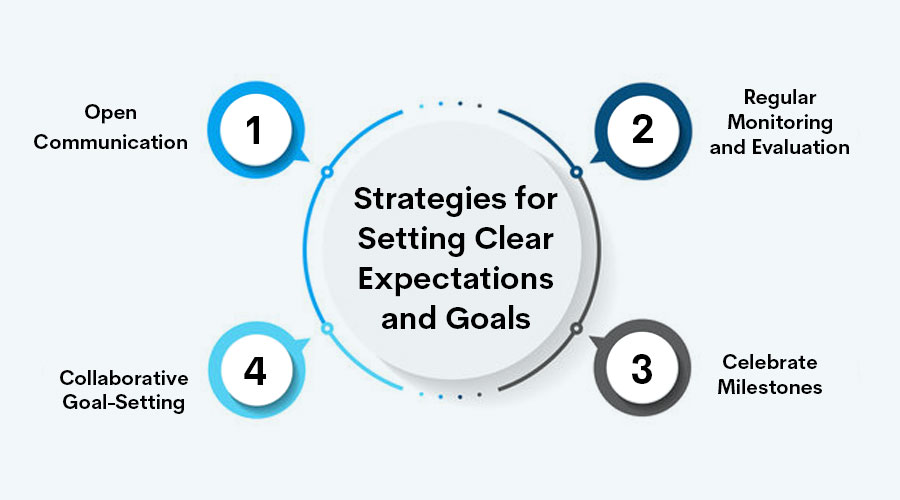Table of Contents
Understanding the Indian Developer Landscape
In the ever-evolving digital era, India has emerged as a powerhouse in the global technology landscape. With a burgeoning population of skilled developers, the country stands at the forefront of innovation, driving technological advancements across various industries. Understanding the Indian developer landscape unveils a rich tapestry of talent, diversity, and dynamism, offering a plethora of opportunities along with unique challenges.
The Growth Trajectory: India’s journey in the realm of software development has been nothing short of remarkable. From being synonymous with outsourcing to becoming a hub of innovation, Indian developers have showcased their prowess on the global stage. The nation’s robust education system, coupled with a burgeoning startup ecosystem, has nurtured a generation of tech-savvy individuals who are adept at cutting-edge technologies such as AI, machine learning, blockchain, and IoT.
Diversity and Talent Pool: One of the defining aspects of the Indian developer landscape is its diversity. India boasts a vast talent pool comprising developers from diverse cultural, educational, and socioeconomic backgrounds. This diversity not only fosters innovation but also enables the development of solutions that cater to a global audience. Moreover, India’s emphasis on STEM education has resulted in a steady influx of skilled developers into the workforce, further fueling the growth of the tech industry.
Rise of Tech Hubs: While technology adoption is widespread across the country, certain cities have emerged as prominent tech hubs, driving innovation and entrepreneurship. Bengaluru, often referred to as the Silicon Valley of India, leads the pack with its vibrant startup ecosystem and world-class talent pool. Other cities such as Hyderabad, Pune, and Chennai are also making significant strides in the tech space, attracting investments and talent from around the globe.
Challenges and Opportunities: Despite its rapid growth, the Indian developer landscape is not without its challenges. One of the primary concerns is the skill gap, with industry demands outpacing the pace of skill development. Additionally, infrastructure limitations, bureaucratic hurdles, and regulatory complexities pose significant challenges for developers and businesses alike.
However, amidst these challenges lie immense opportunities. India’s vast market size, coupled with a growing demand for digital solutions, presents a fertile ground for developers and entrepreneurs to thrive. Moreover, initiatives such as Digital India and Startup India are fostering a conducive environment for innovation and growth, further bolstering the Indian tech ecosystem.
The Road Ahead: As India continues its journey towards becoming a global technology powerhouse, collaboration and innovation will be key drivers of success. By bridging the skill gap, fostering inclusivity, and embracing emerging technologies, the Indian developer landscape holds the potential to reshape industries, drive economic growth, and propel the nation towards a digital future.
Navigating Different Hiring Channels
In today’s competitive job market, finding the right talent for your organization can be a daunting task. With the myriad of hiring channels available, it’s crucial to navigate them effectively to attract top-tier candidates. Whether you’re a small startup or a multinational corporation, understanding the nuances of each hiring channel can significantly impact your recruitment success. Let’s explore some key strategies for mastering the art of navigating different hiring channels.
- Job Boards: Job boards remain a popular choice for both employers and job seekers alike. Platforms like Indeed, LinkedIn, and Glassdoor offer a wide reach and attract diverse candidates. When posting job openings on these platforms, ensure your job descriptions are clear, concise, and optimized with relevant keywords to enhance visibility. Additionally, actively engage with potential candidates by responding promptly to inquiries and showcasing your company culture through employer branding initiatives.
- Social Media: Leveraging social media platforms such as LinkedIn, Twitter, and Facebook can amplify your recruitment efforts. Create compelling content that highlights your company’s values, achievements, and job opportunities. Engage with industry professionals and participate in relevant discussions to establish your organization as a thought leader in your field. Utilize targeted advertising features to reach specific demographics and talent pools, maximizing your recruitment reach.
- Employee Referrals: Employee referrals remain one of the most effective ways to source top talent. Encourage your existing employees to refer qualified candidates by offering incentives such as referral bonuses or recognition programs. Cultivate a positive work environment where employees are proud to endorse their workplace, thus expanding your talent network through trusted connections.
- Networking Events: Attending industry-specific networking events, job fairs, and career expos provides valuable opportunities to connect with potential candidates face-to-face. Engage in meaningful conversations, exchange contact information, and follow up promptly with promising prospects. Additionally, consider hosting your own recruitment events or informational sessions to attract passive candidates who may not be actively searching for job opportunities.
- Professional Associations and Organizations: Joining relevant professional associations and industry-specific organizations can facilitate access to a pool of qualified candidates. Participate in workshops, seminars, and conferences to build relationships with professionals in your field. Collaborate with these organizations to promote your job openings and establish your company as an employer of choice within the industry.
- Recruitment Agencies: Partnering with reputable recruitment agencies can streamline the hiring process by leveraging their expertise and network of candidates. Provide clear job requirements and expectations to ensure alignment with your hiring needs. Maintain open communication with your agency partners to receive timely updates and feedback throughout the recruitment cycle.
- Company Career Page: Your company’s career page serves as a centralized hub for showcasing job openings, company culture, and employee benefits. Ensure your career page is visually appealing, easy to navigate, and mobile-friendly to enhance the candidate experience. Incorporate employee testimonials, videos, and photos to provide insight into your workplace culture and values.
Assessing Skills and Expertise
In today’s dynamic job market, assessing skills and expertise accurately has become paramount for businesses aiming to thrive. Whether you’re a hiring manager seeking the perfect candidate or an individual evaluating your own capabilities, understanding the intricacies of skill assessment is crucial. In this guide, we delve into the key aspects of assessing skills and expertise effectively.
Understanding the Landscape
Before diving into the assessment process, it’s essential to grasp the diverse nature of skills and expertise. Skills can be categorized into technical, soft, and transferable skills. Technical skills encompass specific competencies required for a particular job, such as programming languages for a software developer. Soft skills, on the other hand, relate to interpersonal abilities like communication and teamwork. Transferable skills are those that can be applied across various roles, such as problem-solving and time management.
Expertise, on the other hand, goes beyond skills. It involves a deep level of knowledge and proficiency acquired through experience, education, and continuous learning. Expertise often manifests in the ability to solve complex problems, make informed decisions, and innovate within a particular domain.
The Assessment Process
- Identifying Core Competencies: Begin by outlining the essential skills and expertise required for the role or task at hand. Consult job descriptions, industry standards, and stakeholder input to create a comprehensive list of competencies.
- Choosing Assessment Methods: There are various assessment methods available, including interviews, tests, simulations, and portfolio reviews. Select the methods that align best with the nature of the skills being evaluated. For instance, technical skills may be assessed through coding challenges or practical exercises, while soft skills could be evaluated through behavioral interviews or role-playing scenarios.
- Designing Evaluation Criteria: Develop clear and measurable criteria for assessing each skill and expertise area. Criteria should be specific, relevant, and aligned with organizational goals. Consider utilizing a scoring rubric to standardize evaluations and ensure fairness.
- Conducting Assessments: Implement the chosen assessment methods, ensuring consistency and objectivity throughout the process. Provide candidates or individuals with clear instructions and ample opportunity to demonstrate their abilities. For expertise assessment, consider incorporating real-world scenarios or case studies to gauge problem-solving capabilities and decision-making skills.
- Gathering Feedback: Solicit feedback from multiple stakeholders involved in the assessment process, such as interviewers, peers, and supervisors. Evaluate the effectiveness of the assessment methods and criteria, identifying areas for improvement.
- Iterating and Improving: Continuously refine your assessment process based on feedback and outcomes. Stay updated on industry trends and best practices in skill evaluation to enhance the accuracy and relevance of your assessments over time.
The Importance of Accurate Assessment
Accurately assessing skills and expertise is essential for several reasons:
- Optimized Hiring Decisions: Effective skill assessment ensures that organizations hire candidates who possess the necessary competencies to excel in their roles, leading to higher productivity and job satisfaction.
- Employee Development: Assessing skills and expertise enables organizations to identify areas for employee development and provide targeted training and mentorship opportunities. This fosters professional growth and retention within the workforce.
- Strategic Planning: Understanding the skill sets and expertise available within an organization allows for better strategic planning and resource allocation. It ensures that teams are adequately equipped to tackle challenges and capitalize on opportunities.
- Enhanced Innovation: By accurately assessing expertise, organizations can leverage their employees’ specialized knowledge to drive innovation and competitive advantage within their respective industries.
Leveraging Freelance Platforms
In today’s dynamic job market, businesses are increasingly turning to freelance platforms to fulfill their project needs. Leveraging freelance platforms can be a game-changer for both businesses and freelancers alike. However, to reap the full benefits, it’s essential to understand how to navigate these platforms effectively.
Understanding Freelance Platforms: Freelance platforms are online marketplaces where businesses can find skilled professionals for various projects, ranging from graphic design and content writing to programming and virtual assistance. These platforms provide a space for freelancers to showcase their expertise and connect with potential clients.
Choosing the Right Platform: With numerous freelance platforms available, selecting the right one for your needs is crucial. Consider factors such as the platform’s user base, reputation, fees, and the types of projects it hosts. Popular platforms like Upwork, Freelancer, and Fiverr offer a wide range of opportunities, while niche platforms cater to specific industries or skill sets.
Creating a Standout Profile: Your profile is your virtual storefront on freelance platforms, so it’s essential to make a strong impression. Craft a compelling bio that highlights your skills, experience, and accomplishments. Use professional photos and include relevant samples of your work to showcase your capabilities. Additionally, be sure to complete any skill assessments offered by the platform to validate your expertise.
Navigating the Marketplace: Once your profile is set up, it’s time to start bidding on projects or listing your services. Take the time to browse through available opportunities and tailor your proposals to each job’s requirements. Personalize your pitches, demonstrate your understanding of the project, and explain how your skills align with the client’s needs. Building a strong rapport with clients through clear communication and timely delivery is key to establishing long-term relationships.
Managing Your Workflow: As a freelancer, managing your workflow efficiently is essential for success. Use project management tools to stay organized, set realistic deadlines, and prioritize tasks effectively. Establish clear communication channels with clients to ensure that expectations are met, and any potential issues are addressed promptly. Maintaining a professional demeanor and delivering high-quality work consistently will earn you positive reviews and referrals, further boosting your reputation on the platform.
Leveraging Feedback and Reviews: Feedback and reviews from clients play a vital role in building credibility and attracting future opportunities. Strive to deliver exceptional service on every project to earn positive ratings and testimonials. Address any constructive criticism gracefully and use it as an opportunity for growth. Showcase your top-rated reviews prominently on your profile to instill confidence in potential clients.
Expanding Your Network: Freelance platforms not only connect you with clients but also offer opportunities to network with fellow professionals. Engage in community forums, participate in relevant discussions, and collaborate with other freelancers on projects when appropriate. Building a strong network can lead to referrals, partnerships, and valuable insights into industry trends and best practices.
Partnering with Development Agencies
In today’s fast-paced digital landscape, staying ahead of the competition is not just a goal; it’s a necessity for survival. As businesses strive to innovate, expand, and deliver exceptional products and services, the importance of strategic partnerships cannot be overstated. Among these partnerships, collaborating with development agencies emerges as a beacon of opportunity, offering a multitude of benefits that can propel businesses to new heights.
Understanding Development Agencies:
Development agencies are entities dedicated to crafting digital solutions tailored to specific business needs. These agencies house a diverse array of talents, including software engineers, designers, project managers, and strategists, who work collaboratively to bring ideas to life. Whether it’s web development, mobile applications, or bespoke software solutions, development agencies specialize in turning concepts into tangible realities.
The Strategic Imperative:
Partnering with development agencies provides businesses with a strategic edge in several key areas:
- Expertise and Innovation: Development agencies bring a wealth of expertise and experience to the table. By tapping into their knowledge base, businesses can leverage the latest technologies, trends, and best practices to drive innovation and stay ahead of the curve.
- Cost-Efficiency: Building an in-house development team can be a costly endeavor, involving recruitment, training, and infrastructure expenses. In contrast, partnering with a development agency offers a cost-efficient solution, allowing businesses to access top-tier talent without the overhead costs.
- Flexibility and Scalability: Development needs vary throughout the business lifecycle. Whether it’s scaling up to meet increased demand or pivoting to adapt to market changes, development agencies provide the flexibility and scalability needed to navigate these challenges effectively.
- Speed to Market: In today’s competitive landscape, speed is of the essence. Development agencies are adept at streamlining the development process, accelerating time-to-market without compromising quality. This agility enables businesses to seize opportunities swiftly and capitalize on emerging trends.
- Focus on Core Competencies: Partnering with a development agency allows businesses to focus on their core competencies while leaving the technical heavy lifting to the experts. This strategic alignment frees up valuable resources and bandwidth, enabling businesses to devote their energy to strategic initiatives and growth-oriented endeavors.
Keys to Successful Collaboration:
While the benefits of partnering with development agencies are clear, successful collaboration hinges on several key factors:
- Clear Communication: Effective communication is the cornerstone of any successful partnership. Establishing clear channels of communication, setting expectations, and fostering open dialogue are essential for aligning objectives and driving shared success.
- Collaborative Approach: Collaboration is not just about delegating tasks; it’s about working together towards a common goal. By fostering a collaborative environment, businesses and development agencies can leverage their respective strengths to achieve optimal outcomes.
- Transparency and Trust: Transparency breeds trust. Building a relationship based on honesty, integrity, and transparency lays the foundation for long-term collaboration and mutual success.
- Agile Methodologies: Embracing agile methodologies allows for iterative development, continuous feedback, and rapid adaptation. This iterative approach enables businesses to respond to changing market dynamics and evolving requirements effectively.
- Commitment to Quality: Quality should never be compromised. Prioritizing quality assurance throughout the development process ensures that deliverables meet or exceed expectations, enhancing customer satisfaction and loyalty.
Utilizing Online Communities and Forums
In today’s interconnected digital landscape, the utilization of online communities and forums has emerged as a paramount tool for individuals and businesses alike. These virtual platforms serve as bustling hubs where like-minded individuals converge to share knowledge, seek advice, and build relationships. From hobbyists discussing their passions to professionals exchanging industry insights, the potential for connection and growth within these online spaces is limitless.
Connecting Beyond Boundaries: One of the most compelling aspects of online communities and forums is their ability to transcend geographical limitations. Regardless of where you are in the world, you can find a community tailored to your interests or professional aspirations. Whether you’re a budding entrepreneur seeking guidance or an enthusiast delving into niche hobbies, these platforms offer a sense of belonging and camaraderie that knows no bounds.
A Wealth of Knowledge at Your Fingertips: The wealth of knowledge available within online communities and forums is truly staggering. Within these virtual realms, individuals freely share their expertise, experiences, and insights on a myriad of topics. From troubleshooting technical issues to discussing the latest trends in an industry, the collective wisdom amassed within these communities is invaluable. By actively participating and engaging with fellow members, individuals can tap into this vast repository of knowledge to enhance their skills and expand their horizons.
Building Meaningful Relationships: Beyond the exchange of information, online communities and forums foster the development of meaningful relationships. Through ongoing interactions and discussions, individuals have the opportunity to connect with others who share their interests or professional goals. These connections can lead to collaborations, mentorships, and even lifelong friendships. In an increasingly digital world, the sense of community fostered within these online spaces provides a refreshing reminder of the power of human connection.
Nurturing Personal and Professional Growth: For individuals, active participation in online communities and forums can be a catalyst for personal and professional growth. Whether it’s honing skills through shared learning experiences or gaining exposure to new ideas and perspectives, these platforms offer fertile ground for development. Similarly, businesses can leverage these communities to engage with their target audience, gather feedback, and establish thought leadership within their respective industries. By embracing the ethos of community and collaboration, both individuals and businesses can thrive in the digital landscape.
Leveraging Online Communities for Success: To harness the full potential of online communities and forums, it’s essential to approach them with intentionality and authenticity. Rather than viewing these platforms solely as tools for self-promotion, focus on building genuine connections and adding value to the community. Actively participate in discussions, contribute meaningful content, and offer assistance to fellow members whenever possible. By fostering a spirit of reciprocity and mutual support, you’ll not only enhance your own experience within these communities but also cultivate a reputation as a trusted and respected member.
Evaluating Cultural Fit and Communication Skills
In today’s globalized marketplace, the importance of evaluating cultural fit and communication skills cannot be overstated. As businesses expand internationally and teams become more diverse, the ability to effectively assess these qualities in potential employees has become a critical aspect of the hiring process.
Cultural fit refers to how well an individual aligns with the values, norms, and behaviors of an organization. It’s not just about whether someone can do the job; it’s also about whether they will thrive within the company’s unique culture. On the other hand, communication skills encompass verbal, non-verbal, and written communication abilities, as well as the capacity to listen, empathize, and convey ideas effectively.
Here are some key strategies for evaluating cultural fit and communication skills during the hiring process:
- Define Your Company Culture: Before you can assess cultural fit, you need to have a clear understanding of your organization’s culture. What values are important to your company? What behaviors are encouraged? By defining your culture, you can better identify candidates who will complement it.
- Ask Behavioral Interview Questions: Instead of asking hypothetical questions, delve into candidates’ past experiences. For example, you might ask, “Can you describe a time when you had to work closely with a team member from a different cultural background? How did you handle any challenges that arose?” This allows you to gauge how candidates have navigated cultural differences in the past.
- Conduct Cultural Fit Assessments: Consider incorporating assessments or exercises into your hiring process that evaluate candidates’ cultural fit. These could include role-playing scenarios, personality assessments, or cultural sensitivity quizzes. Just be sure that these assessments are fair, unbiased, and relevant to the role.
- Observe Non-Verbal Cues: During interviews, pay attention to candidates’ body language, tone of voice, and other non-verbal cues. Do they maintain eye contact? Are they attentive and engaged? Non-verbal communication can reveal a lot about a person’s interpersonal skills and cultural awareness.
- Evaluate Written Communication Skills: Depending on the role, written communication skills may be just as important as verbal communication skills. Review candidates’ resumes, cover letters, and any written materials they submit as part of the application process. Look for clarity, professionalism, and attention to detail.
- Assess Cross-Cultural Competence: In today’s globalized workforce, cross-cultural competence is essential. Look for candidates who have experience working or studying in diverse environments, or who have demonstrated an ability to adapt to new cultures and perspectives.
- Seek Feedback from Multiple Stakeholders: Finally, involve multiple stakeholders in the hiring process, including team members, managers, and other relevant parties. They may have different perspectives on candidates’ cultural fit and communication skills, providing valuable insights that can inform your decision.
Setting Clear Expectations and Goals
In the journey towards achieving success, setting clear expectations and goals is akin to charting a roadmap for your endeavors. Whether in personal or professional spheres, clarity in expectations and goals not only streamlines efforts but also enhances productivity and overall satisfaction. This article delves into the significance of setting clear expectations and goals and how it serves as a cornerstone for success.
Understanding Clear Expectations:
Clear expectations lay the groundwork for effective communication and collaboration. Whether within a team, a project, or any relationship, ambiguity often leads to misunderstandings and conflicts. By articulating expectations clearly, all parties involved understand their roles, responsibilities, and the desired outcomes. This clarity fosters a sense of accountability and ownership, driving individuals to deliver their best performance.
Moreover, clear expectations promote transparency and trust. When everyone knows what is expected of them, it reduces the likelihood of assumptions and misinterpretations. Open communication channels are vital for building strong relationships and fostering a positive work culture.
The Power of Well-Defined Goals:
Goals provide direction and purpose, guiding efforts towards a desired outcome. However, not all goals are created equal. Well-defined goals are specific, measurable, achievable, relevant, and time-bound (SMART). This framework ensures that goals are clear and actionable, preventing vagueness and ambiguity.
When individuals or teams have well-defined goals, they can focus their energy and resources more effectively. Each milestone achieved brings a sense of progress and accomplishment, motivating further action. Additionally, clear goals enable better decision-making, as individuals can prioritize tasks based on their alignment with overarching objectives.
Aligning Expectations with Goals:
Setting clear expectations is closely intertwined with defining goals. Expectations outline the standards and behaviors expected, while goals articulate the desired outcomes. Aligning these two aspects ensures coherence and synergy in actions.
For instance, in a business setting, if the expectation is to deliver exceptional customer service, the corresponding goal could be to achieve a certain customer satisfaction rating within a specified timeframe. By aligning expectations with goals, organizations can create a roadmap that not only drives performance but also cultivates a culture of excellence.
Strategies for Setting Clear Expectations and Goals:
- Open Communication: Encourage open dialogue to clarify expectations and goals. Provide opportunities for feedback and clarification to ensure mutual understanding.
- Collaborative Goal-Setting: Involve all stakeholders in the goal-setting process to foster ownership and commitment. Collaboration enhances buy-in and encourages collective responsibility.
- Regular Monitoring and Evaluation: Continuously track progress towards goals and reassess expectations as needed. Adjustments may be necessary based on changing circumstances or emerging priorities.
- Celebrate Milestones: Recognize and celebrate achievements along the way. Acknowledging progress boosts morale and reinforces commitment to the overarching vision.
Exploring Remote Work Dynamics
In today’s rapidly evolving professional landscape, the concept of remote work has transcended from a mere trend to an essential element of modern-day employment. As the world continues to grapple with unprecedented challenges, remote work dynamics have emerged as a pivotal force reshaping how businesses operate and individuals engage in their careers.
Remote work, once considered a luxury reserved for freelancers and tech-savvy entrepreneurs, has now become a mainstream phenomenon adopted by organizations across diverse industries. This shift has been accelerated by advancements in technology, changing attitudes towards work-life balance, and the necessity brought forth by global events such as the COVID-19 pandemic.
One of the most notable aspects of remote work dynamics is the newfound emphasis on flexibility. Traditional nine-to-five schedules have given way to more adaptable arrangements, allowing employees to design their workdays around personal obligations and preferences. This flexibility not only fosters greater productivity but also enhances employee satisfaction and retention rates.
Moreover, remote work dynamics have redefined the concept of workplace inclusivity. Geographical barriers are no longer impediments to collaboration, as virtual communication tools facilitate seamless interaction among team members regardless of their physical location. This inclusivity extends opportunities to individuals with disabilities, caregivers, and those living in remote areas, promoting diversity and equal access to employment opportunities.
However, navigating remote work dynamics also presents its share of challenges. The lack of face-to-face interaction can hinder team cohesion and communication, leading to feelings of isolation and disconnect among remote workers. Additionally, blurred boundaries between work and personal life may result in burnout and decreased job satisfaction if not managed effectively.
To address these challenges and optimize remote work dynamics, organizations must prioritize the implementation of robust remote work policies and provide adequate support and resources to remote employees. This includes investing in secure and reliable technology infrastructure, offering remote collaboration tools, and fostering a culture of trust and accountability within virtual teams.
Furthermore, proactive communication and regular check-ins are essential to maintaining engagement and morale among remote workers. Encouraging virtual team-building activities, providing opportunities for professional development, and promoting work-life balance initiatives can also contribute to a positive remote work experience.
Top Hire Indian Developers Companies
In the bustling landscape of technology, where innovation reigns supreme, finding the right talent is paramount. For businesses aiming to thrive in the digital realm, partnering with top-tier Indian developer companies presents an unparalleled opportunity. Renowned for their technical prowess, adaptability, and cost-effectiveness, these companies have carved a niche for themselves in the global tech ecosystem. Let’s delve into the realm of Indian developer companies and explore the crème de la crème of the industry.
-
-
Next Big Technology:

Focus Area
- Mobile App Development
- App Designing (UI/UX)
- Software Development
- Web Development
- AR & VR Development
- Big Data & BI
- Cloud Computing Services
- DevOps
- E-commerce Development
Industries Focus
- Art, Entertainment & Music
- Business Services
- Consumer Products
- Designing
- Education
- Financial & Payments
- Gaming
- Government
- Healthcare & Medical
- Hospitality
- Information Technology
- Legal & Compliance
- Manufacturing
- Media
-
- Infosys: A name synonymous with innovation and excellence, Infosys stands tall as one of India’s leading IT services and consulting companies. With a relentless focus on driving client success through technological innovation, Infosys offers a diverse range of services including application development, cloud computing, and cybersecurity. Backed by a talented pool of developers and a culture of continuous learning, Infosys remains a preferred choice for businesses seeking tailor-made tech solutions.
- Wipro: Wipro, with its rich legacy and global presence, epitomizes India’s prowess in the IT services domain. Specializing in digital transformation, Wipro delivers end-to-end solutions spanning from application development to infrastructure management. Embracing agile methodologies and disruptive technologies, Wipro empowers enterprises to stay ahead of the curve in an ever-evolving digital landscape.
- Tech Mahindra: As a leading provider of digital transformation, consulting, and business reengineering services, Tech Mahindra excels in delivering innovative solutions that drive business growth. With a keen focus on harnessing the power of AI, analytics, and automation, Tech Mahindra enables organizations to enhance operational efficiency and unlock new revenue streams. Their collaborative approach and customer-centric ethos make them a preferred partner for businesses across industries.
- HCL Technologies: HCL Technologies, known for its customer-centric approach and innovation-led culture, is a global leader in providing IT services and solutions. From software development to infrastructure management, HCL leverages its deep domain expertise to address complex business challenges and accelerate digital transformation. With a commitment to driving value for clients through innovation and operational excellence, HCL continues to set new benchmarks in the IT services landscape.
FAQs On Hire Indian Developers
In today’s fast-paced digital landscape, the decision to hire developers, particularly from India, has become increasingly common. With India’s reputation as a global IT hub, businesses worldwide are tapping into its vast talent pool. However, if you’re new to this process, you might have several questions in mind. Let’s delve into some frequently asked questions (FAQs) to help you navigate the process with ease.
1. Why should I consider hiring Indian developers? India boasts a robust IT ecosystem with a large pool of highly skilled developers proficient in a wide array of technologies. Hiring Indian developers often offers cost advantages without compromising on quality. Moreover, India’s cultural adaptability and proficiency in English make communication seamless, fostering smoother collaboration.
2. What are the typical skills and expertise of Indian developers? Indian developers are renowned for their proficiency in various programming languages and frameworks, including but not limited to Java, Python, JavaScript, React, Angular, and Node.js. They possess diverse skill sets, ranging from web and mobile app development to AI, machine learning, and blockchain technology.
3. How can I find the right Indian developers for my project? Numerous platforms, both freelance and professional, cater to connecting businesses with Indian developers. Websites like Upwork, Freelancer, and Toptal offer a pool of talented developers with diverse expertise. Additionally, tapping into Indian IT companies or consulting with recruitment agencies specializing in IT talent can help you find the perfect fit for your project.
4. What factors should I consider while hiring Indian developers? When hiring Indian developers, it’s essential to assess their technical proficiency, experience, and portfolio. Look for developers who have worked on projects similar to yours and possess the requisite skills and domain knowledge. Additionally, consider factors such as communication skills, timezone compatibility, and cultural fit to ensure smooth collaboration.
5. How do I ensure effective communication with Indian developers? Effective communication is key to the success of any development project. Fortunately, Indian developers are known for their proficiency in English, making communication relatively smooth. Utilize collaboration tools such as Slack, Microsoft Teams, or Skype for regular updates and meetings. Clearly define project requirements, expectations, and milestones from the outset to avoid misunderstandings.
6. What are the typical rates for hiring Indian developers? The cost of hiring Indian developers varies depending on factors such as skill level, experience, and project complexity. Generally, Indian developers offer competitive rates compared to their counterparts in Western countries, making outsourcing to India an attractive option for businesses looking to optimize costs without compromising quality.
7. How do I ensure the security of my project when hiring Indian developers? Security concerns are valid when outsourcing development work. To mitigate risks, ensure that the developers you hire adhere to stringent security protocols and practices. Sign non-disclosure agreements (NDAs) and establish clear data protection guidelines. Working with reputable platforms or companies with a proven track record can provide an added layer of security and assurance.
Thanks for reading our post “Hire Indian Developers – Tips Ways to Hire And Cost”. Please connect with us to learn more about Best Hire Indian Developers.














